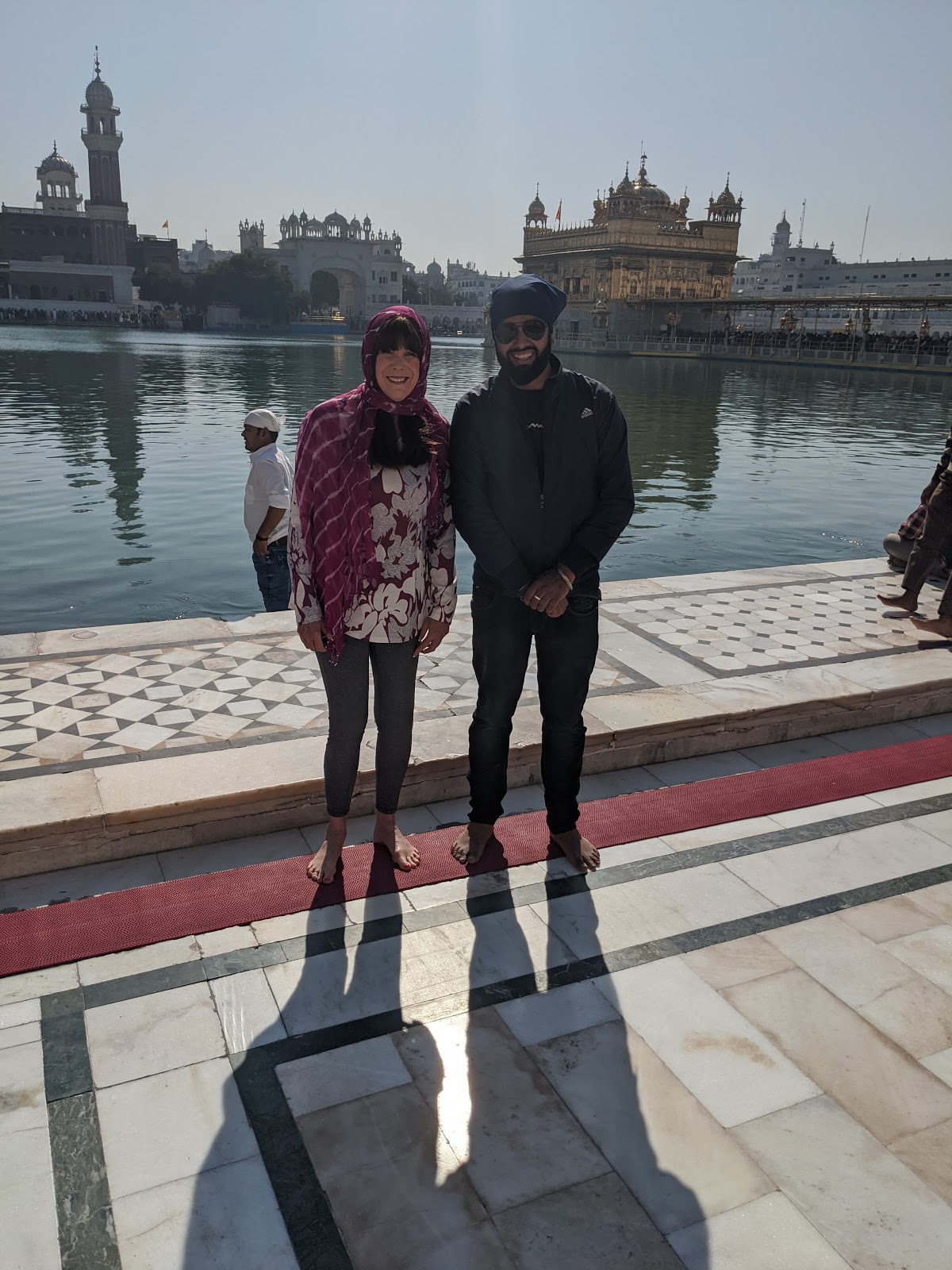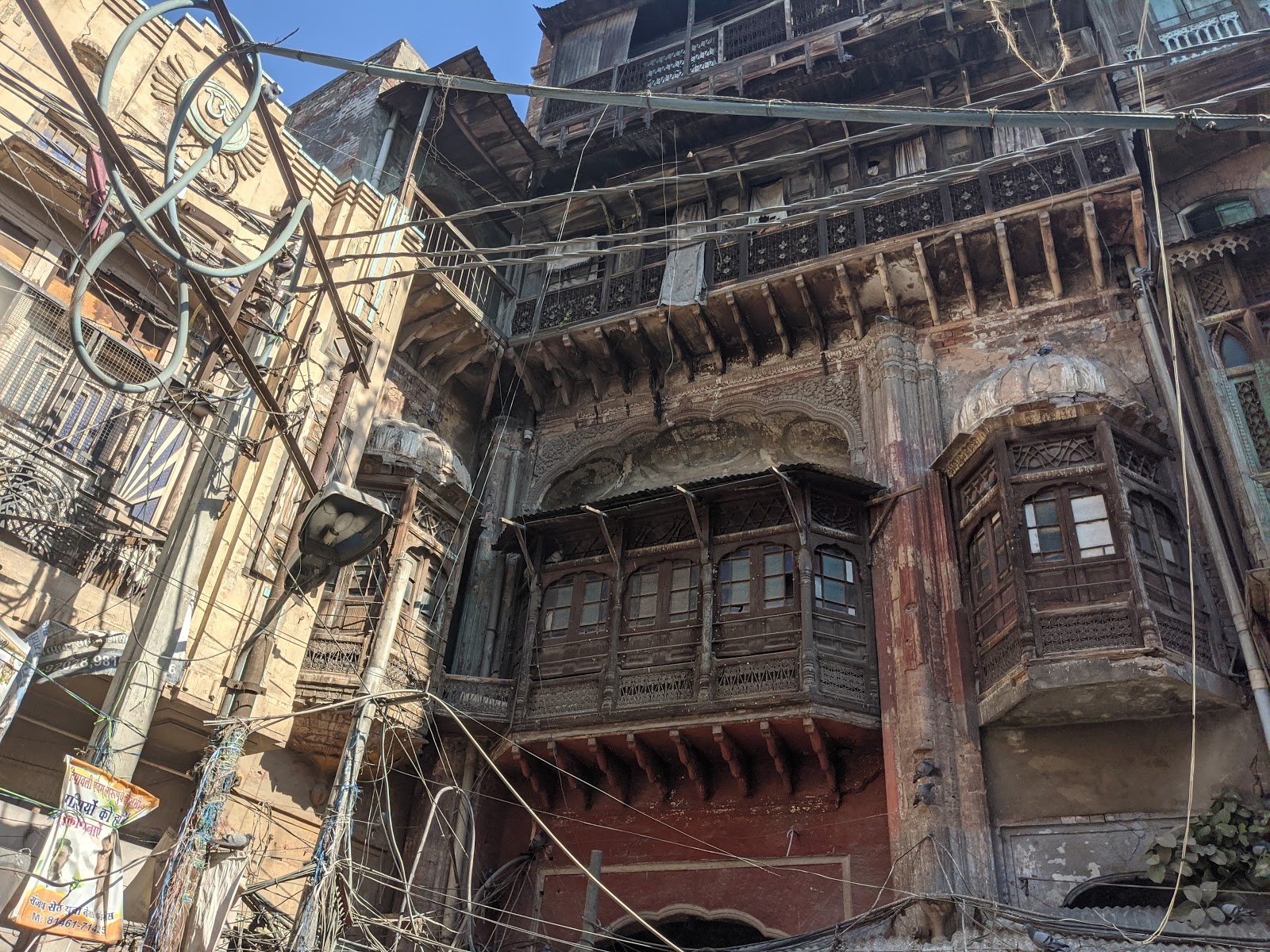 |
| The spacious veranda outside the door to our lovely suite. |
We’re having some technical issues. Maybe I should have bit the bullet and purchased another Windows laptop instead of a Chromebook. As it turned out in my haste to order, the HP Chromebook I ordered doesn’t have a slot for an SD camera card.
 |
| A small, casual bar in the dining area. |
Subsequently, I’ve had to use my phone to take photos and although many come out well, using zoom is a missing aspect of using a smartphone as a camera. Now that we’re in the midst of another nine safaris after nine at the last location in the Bandhavgarh National Park, today I broke down and used the camera, getting many better shots than ever possible using the phone.
Now, I’m left with no way to load them. A few minutes ago I purchased an adapter from Amazon India with a proposed receipt date of Monday, March 1st, the date we arrive at our hotel in Udaipur. Hopefully, once again a shipment within India will work out as well as the last.
 |
| The spacious pool is near the dining and bar area. |
As a result, in the interim, I will be uploaded only those photos we’d taken on our phone while continuing to use the camera. Once the adapter arrives on Monday when we’ll have more time, I’ll be able to share the many fine photos we took at Kanha Tiger Reserve.
After going out on four safaris as of today, with two more remaining tomorrow that encompass 10 hours of each day, we decided to split up today with me taking the 5:30 am session and Tom out right now on the afternoon session.
 |
| The grounds are filled with named indigenous vegetation befitting this type of resort. |
Doing so left me with time to post today’s story and photos and to work on the Amazon order which is trickier than compared to ordering supplies from the US.
 |
| The bathroom is small but nicely appointed. |
Since we don’t have a tremendous number of tours during our three nights in Udaipur, we’ll have time to upload the camera’s photos and get more caught up posting.
Plus, the WiFi in both safari resorts has been sketchy at best, in each case, off and on all day and only accessible from the reception office. Not being able to put up my feet and relax while preparing a post is a bit annoying, but soon we’ll be in a hotel with good service in our room (so says the online information).
 |
| There are several seating areas in our suite. |
This resort is beautiful and well-appointed otherwise. Besides Tom’s disappointment with the food, we’re enjoying our time in this premium property.
So far, our 55-night tour of India is going quite well and we have a fabulous company, Tailormade Journeys continuing to work with us for any questions or concerns. We’ve been very pleased with their service working with rep Rajiv and his support staff in making this a seamless series of events, a highly complicated scenario for this extended period. They can be reached as follows:
United Kingdom Tel : 01753 577330, 01753 201201 Mobile: 07739716978.
 |
| The king-sized bed is very comfortable. |
Photo from one year ago today, February 28, 2019:
 |
| Mom and Babies hanging out by the recently cleaned cement pond. For more photos, please click here. |


































































































